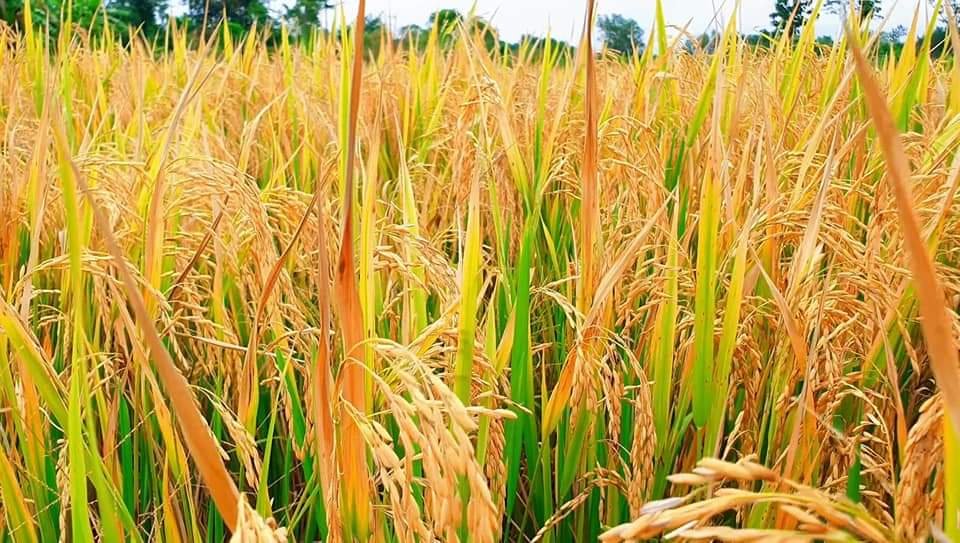
BUILDING A PLANT OF BIOLOGICAL MATERIALS, ORGANIC RICE MATERIAL AREAS.
Vietnam is the cradle of wet rice civilization, rice grain is associated with the development of the nation. In the process of economic renewal, it is especially important to devise new economic strategies and solutions to improve production and business activities. For Vietnam, which is a country coming up from agriculture, with more than 70% of the population working in the agricultural sector, rice export is considered a strategic direction and needs more attention. From 1989 to 2021, more than 30 years of Vietnamese rice grain entered the global market, ending the period of rice shortage and turning to export. Gradually, the export rice industry has grown and become one of the three major exporting countries in the world. The transformation of Vietnam’s rice export industry is recognized by the world as a miracle.
Currently, the average rice yield of our country is estimated at nearly 6 tons/ha. Vietnam is currently ranked 2nd in the world in terms of rice export volume. Rice is exported to more than 135 countries and regions, of which Asia accounts for 77%, the Americas 7.6%, the Middle East 1.2% and Australia 0.88%. Up to this point, the country has nearly 200 rice exporting enterprises, but up to 80% of enterprises have weak and medium financial capacity, only about 20% of enterprises have stable financial capacity. Looking at these numbers, it can be seen that our country’s rice exports only serve easy markets with the main requirement of low-grade rice. The amount of rice exported to fastidious markets such as Australia, America or Europe is still very small, even absent.
The cause of this situation is that the quality of Vietnamese rice is low, and there is no brand name at all. This stems from the current situation of rice production, consumption and processing in our country. Currently, the area of high-quality rice cultivation in localities is still limited, and farmers are not used to changing from high-yield rice to high-quality rice with reduced productivity. Partly because they are concerned that rice prices are volatile, not enough to cover input costs. On the other hand, with the fear of approaching new things, farmers want to grow traditional rice varieties that have many years of cultivation experience with easy-to-grow characteristics and high yields. Meanwhile, on the side of enterprises, when purchasing rice, in many cases, there is no price discrimination between ordinary rice and high-quality rice, so it does not create an incentive to change rice varieties from farmers.
From the above facts about the situation of rice export with low cost and not good quality, our project “building biomass material area, organic rice material area” in Hau Giang province will solve the above problems. The project lays the foundation for sustainable green development of rice production in association with processing and development of organic agriculture in Hau Giang province and the Mekong Delta. Providing organic food for people in Hau Giang province and the Mekong Delta. In the future, it is possible to boost exports of rice and other organic foods from Hau Giang province and the Mekong Delta. Treatment of organic wastes in agriculture including rice husk straw and other agricultural and livestock wastes, creating organic fertilizers for sustainable green development in Hau Giang province and In the Mekong Delta, by biogas system, to both produce organic fertilizer and produce electricity and thermal energy.
– Based on data on climate change in the Mekong Delta and Hau Giang Province in particular. We have determined the urgency and importance of the planning of the raw material area as well as the importance of the problem for the development of the region, and if the planning is well done, it will remove a chronic knot for the delta. .
– Planning of raw material areas in Hau Giang province is a plan to optimize resource allocation in the Mekong Delta. Contributing to economic development, protecting the environment and improving the people’s material and spiritual life, connecting with other territories in the country such as Ho Chi Minh City. Ho Chi Minh City and the Southern Key Economic Zones. And it also works when countries enter the recovery phase after the “shock” of Covid-19.
We believe and commit that with strong financial capacity, a team of leading experts, a breakthrough in technology, resonance with your support, a sustainable green economic development strategy. The circulation in Hau Giang will be successful and will be the basis for bringing about enormous achievements in the aspects of “Comprehensive economic development from the foundation of agriculture, development of people’s livelihoods, closely associated with environmental protection”. environmental protection and social security”. At the same time, forming a solid foundation for both a development strategy of the Mekong Delta region in particular and Vietnam in general, even having a far-reaching and long-term influence in the international arena. elevate Vietnam’s position and role in the world economy.
Điều khoản sử dụng | Chính sách bảo mật
Bản quyền thuộc về THD VIỆT NAM